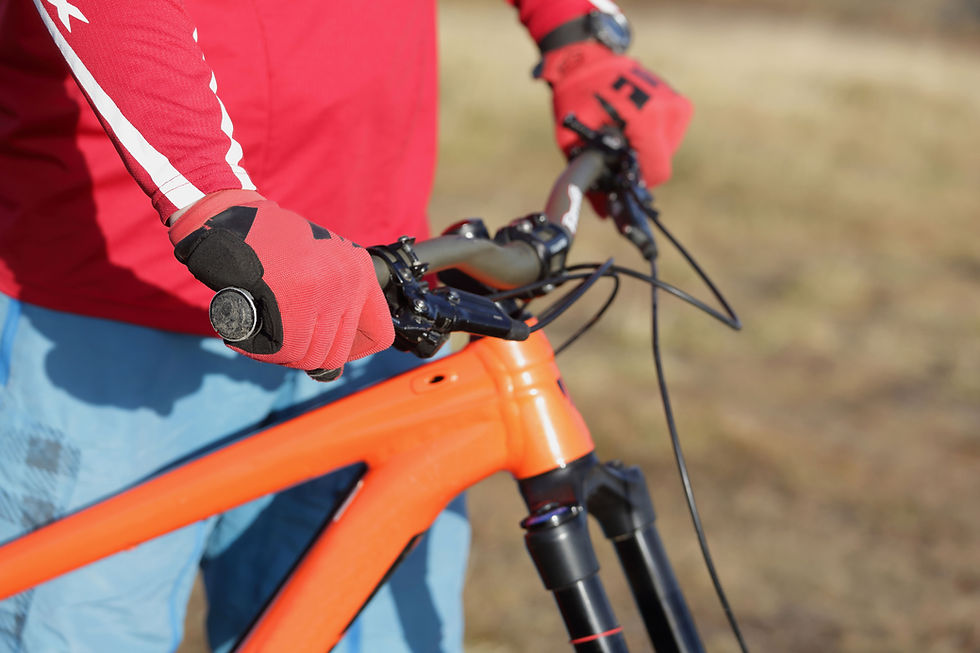
Cycling off road is as safe and easy as you want it to be, but the further you go off the beaten track and the more technical the trails you attempt, the more the risks can stack up. If you cycle within your technical ability and take sensible precautions, then cycling is a great fun and safe way to enjoy the outdoors with all the family. To find places to cycle that are right for you, check out the Outdoor Nation Adventure Map.
10 tips to keep you safe when cycling off road
1. Wear a helmet

Wearing a helmet and ensuring it is properly done-up is a must, even on a gentle ride. Depending on the kind of trails you're on, you may also want to wear eye protection, gloves and even knee pads. There's plenty of other protective gear out there to consider, depending on the type of riding you're doing.
2. Check your bike

Check your bike for faults before you head off. It's mostly common sense, but if you're not sure then don't be afraid to ask someone. As a minimum, check that your wheels are firmly attached, your tyres are inflated, the breaks work, the seat is firmly fitted at the right height, and give the handlebars and frame a once-over.
3. Don't over stretch yourself

Make sure you know the technical level of your route and that you're confident you can cover the distance. If you find yourself faced with something above your skill level, then don't be afraid to get off and walk or find another way around. Yes, do try new things, but carefully and only if there is someone with you.
4. Be sure of your navigation

It's easy to get lost, and when you're cycling you can go quite far without realising you've taken a wrong turn. Be sure to always take your phone with a mapping app - the OS maps app is highly recommended. It's also often worth taking a real map and compass and knowing how to use them.
5. Don't go alone

Despite your best precautions, anything can happen on a trail so try to avoid going alone. If you really have to go on your own, then be sure to tell someone your plans. You can share the details of what you're doing using the share function on Outdoor Nation activity pages.
6. Have a means to communicate

Take a fully charged phone and keep it safe and dry. Consider a portable charger too if you're out for the day. In an emergency in the UK call 999 - did you know that even if there is no signal from your provider, the phone will automatically use any network available? Also, take a whistle to attract attention if you're going to an isolated spot.
7. Be mindful of the conditions

You can cycle all year round and in most conditions, but wet and freezing weather does make roots and leaves slippery so be ready to be extra careful. Check last light and give yourself plenty of time to get back in daylight. Its usually worth having your bike lights and a torch with you just in case.
8. Pack the essentials

Think carefully about what you might need for your ride, based on weather, difficulty and distance. A warm layer, waterproof jacket, water, snacks and means of navigation and communication are usually essential. For more details on what to take, check out our starter guide for off-road cycling.
9. Be ready to fix a puncture

Being stuck with a flat tyre miles from anywhere is no fun and can cause real issues. Make sure that someone takes a puncture repair kit, a multitool, a spare tyre, and a small pump, and that they know how to use them. If you don't know how to fix a puncture then learn how before your go.
10. Take care on roads

It's common to have to cycle on roads, even if you're going cross-country. Whilst these are often quiet country lanes, they can be deceptively dangerous so take extra care. Make sure that you are visible, follow the highway code, and carefully supervise children. For more info check out the Highway Code for cyclists.
The risks you may face when cycling off road will vary considerably depending on where you're going and how long for. As a minimum, don't go alone, make sure you wear a helmet and don't over-stretch yourself. If in doubt, get off and push over any bit's you're uncomfortable with.
Thanks for this it is very informative and I really like the links one can click on for further information if needed.